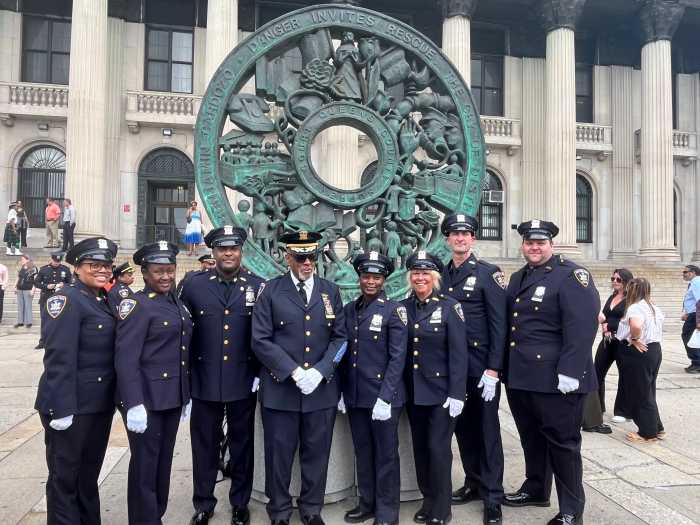He…
By Philip Newman
A survey commissioned by New York City Public Advocate Mark Green indicates drug stores regularly ignore a state law requiring posting of accurate prescription drug prices. Only one Queens pharmacy failed an inspection by Green’s inspectors, however.
He acknowledged stores have trouble complying with the law and proposed legislation to establish a new computerized system to allow easier updating of such prices, which change rapidly.
City Council Speaker Peter Vallone (D-Astoria) at the same time announced a program intended to help the elderly “reduce the financial burden of prescription drugs.”
“New York state law requires pharmacies to post their current prices for 154 common prescription drugs on large 23-by 35-inch pink paper posters near their prescription counters,” Green said. “Customers are obliged to pay no more than the posted prices for these prescriptions. In practice, the prescription price poster system fails miserably.”
Staff members and interns from the Public Advocate’s Office visited 65 pharmacies in 12 neighborhoods to check the accuracy and visibility of prescription drug price posters.
Inspectors visited four Queens pharmacies, checking prices of three different drugs. They found three of the four with accurate prices on all drugs checked. Only a D&G drugstore on 31st Street failed to post prices accurately on any of the specified drugs.
The 1973 law on posting of prescription drug prices was intended to enable consumers to save money by comparing prices for 150 common prescription drugs. Prices of such drugs are supposed to be listed on large posters in the stores.
Green said 20 stores had none of the 10 prices posted correctly, two stores had out-of-date posters from 1993 and two stores had no posters at all.
One store posted $7.29 for a 90-pill prescription of the cholesterol reducer Pravachol that was actually $248.75. Another posted $69.50 for a prescription for the cholesterol reducer Lipitor that was actually $180.
Green said a number of stores had prices marked out with hard-to-read revisions printed above the original prices.
He also said since wholesale prices change almost constantly and make it difficult to comply with the law, he proposed new legislation replacing the posters with a requirement that drugstores use their computers to print out the prices of the 150 most frequently prescribed drugs on a standardized form for customers on demand.
Andrea Kosier, a spokeswoman for Duane Reade, the metropolitan area’s largest drugstore chain, said the company supported the proposed legislation, saying it would ‘provide the public with useful and up-to-date pricing information.”
Vallone said his Prescription Reimbursement of Moderate Income Senior Expenses program would help senior citizens.
“When you live on a fixed income, paying for your medication may mean you have to forego other necessities,” said Vallone.
His proposal is open to all New York City residents over age 65 who can apply to the Department for the Aging for a refund of up to half their deductible costs based on a sliding scale.
Single seniors with incomes between $20,000 and $35,000 and married seniors with joint incomes from $26,000 and $50,000 may be eligible for the program.
Reach contributing writer Philip Newman by e-mail at Timesledgr@aol.com or call 229-0300, Ext. 136.




































